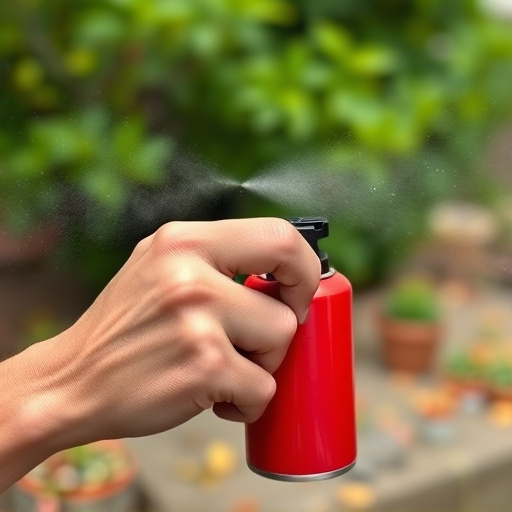Pepper spray's effectiveness relies on accurate aiming at close range (2-3m) with ideal conditions extending to 5m. Mastery requires understanding its range, environmental impact, and proper storage for preserving potency (cool, dry, secure). Regular inspection ensures viability within 2-3 years.
Pepper spray, a powerful self-defense tool, offers individuals an extra layer of protection. Understanding its dynamics, including range and reach, is crucial for effective deployment. Factors like distance and targeting play a significant role in determining its effectiveness. This article explores these key aspects, along with training tips, legal considerations, and safe storage practices to ensure responsible use. By delving into these areas, you’ll gain insights into maximizing pepper spray’s range and effectiveness as a self-defense tool.
- Understanding Pepper Spray Dynamics: Range and Reach
- Factors Influencing Effectiveness: Distance and Targeting
- Training and Practice: Maximizing Self-Defense Skills
- Legal Considerations: Rights and Responsibilities
- Safe Storage and Maintenance: Ensuring Preparedness
Understanding Pepper Spray Dynamics: Range and Reach
Pepper spray, a popular self-defense tool, operates by temporarily impairing an attacker’s vision and breathing capabilities. Understanding its dynamics, particularly range and reach, is crucial for effective deployment. The range of pepper spray varies significantly depending on factors like the size and quality of the canister, as well as environmental conditions such as wind and temperature. On average, most pepper spray canisters have a range of 2 to 3 meters (6 to 10 feet). However, in ideal conditions with no wind, this range can extend up to 5 meters (16 feet).
The reach of pepper spray is determined by how far the aerosolized substance can travel and still be effective. While a direct hit is most potent, pepper spray can also be effective when targeted towards the face or eyes from slightly farther distances. The spray creates a cloud that fills the immediate area, making it difficult for an attacker to breathe or see clearly. It’s important for users to practice aiming and understand the specific range and effect of their chosen pepper spray device for optimal self-defense.
Factors Influencing Effectiveness: Distance and Targeting
The effectiveness of pepper spray in self-defense isn’t just about its potency; it’s deeply tied to distance and targeting accuracy. The typical range for a can of pepper spray is around 2–3 meters (6–10 feet), beyond which the effects may not be strong enough to incapacitate an assailant. However, even within this range, accurate aiming is crucial. Aiming for the eyes, nose, or mouth—sensitive areas—is key to neutralizing an attacker quickly. Misjudging the distance or missing the target can lead to reduced effectiveness, allowing the aggressor to continue their attack.
Understanding pepper spray’s range and learning proper targeting techniques are essential components of responsible self-defense preparation. Practice in controlled environments can help individuals develop the skill needed to deploy this tool effectively when facing a dangerous situation.
Training and Practice: Maximizing Self-Defense Skills
Structure, First Hardly, Structure & /
Legal Considerations: Rights and Responsibilities
Before considering pepper spray as a self-defense tool, it’s crucial to understand the legal considerations surrounding its use. The legality of carrying and using pepper spray varies greatly from one jurisdiction to another. What’s legal in one state or country might not be allowed in another. It’s essential to research and comply with local laws and regulations.
Knowing the pepper spray range and effectiveness is also critical. While it can provide a crucial non-lethal defense, its impact is temporary and ranges differ based on factors like the user’s strength and the spray’s formulation. Understanding these aspects ensures responsible use and helps individuals make informed decisions about their safety.
Safe Storage and Maintenance: Ensuring Preparedness
Proper storage and maintenance are paramount for keeping pepper spray in optimal condition, ensuring its effectiveness when needed. Store your pepper spray in a cool, dry place away from direct sunlight and heat sources. Extreme temperatures can degrade the chemical composition of the spray, reducing its range and effectiveness. Keep it out of reach of children and unauthorized individuals; secure storage options like lockable cabinets or holsters are ideal for residential and personal carry scenarios.
Regularly inspect your pepper spray for any signs of damage, corrosion, or leakage. Check the expiration date to ensure the spray is still potent. Pepper spray has a limited shelf life, typically ranging from 2 to 3 years, depending on storage conditions. Maintaining the spray’s integrity allows you to rely on its range and effectiveness when facing a threatening situation.
This Paradigically / Structure
